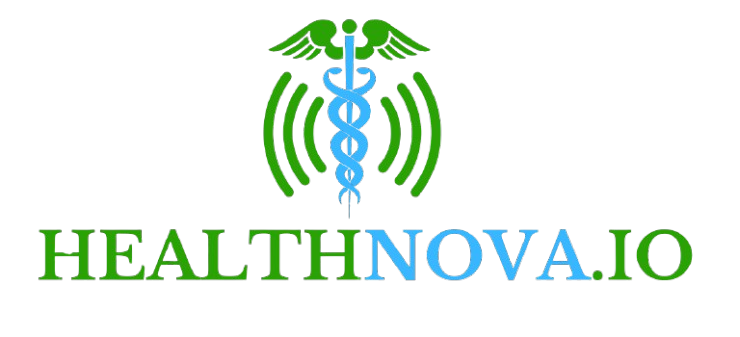Are we really free to eat? Why is so many people at the heart of so many people that it’s hard to stick to the diet.
To get the answer, Harvey J. Grill, a neurological scientist at the University of Pennsylvania, asked what would happen if he returned to the rat and removed all brain brains. The brainstorm controls basic functions such as heart rate and breathing. But animals could not smell, could not see, and could not remember.
Do you know when they spent enough calories?
To find out, Dr. Grill dropped liquid food in his mouth.
“When they reached the point where they stopped, they allowed food to be drained in their mouths,” he said.
The study, which began decades ago, was the starting point for the study of scientists that constantly surprised and took home home. This work has gained more relevance as scientists generally understand how new drugs that cause weight loss, called GLP-1, affect the brain’s eating habits.
The rising story is why some people do not get obesity and others do not explain why they are not. Instead, it provides clues about making us start eating and clues about the time we stop.
Dr. Jeffrey Friedman, an obese researcher at Rockefeller University in New York, ignores the idea that most of the studies have been in rodents, but somehow are somehow different. He said that human beings are subordinate to billions of years of evolution, leading to sophisticated nerve paths that control when they eat and stop eating.
As a result of investigating how eating habits are controlled, the researchers have found that the brain is steadily getting a hint signal of how dense calories are. There is a certain amount of calories that the body needs, and this signal allows the body to get them.
This process begins before a laboratory animal eats a bite. Food predicts whether a lot of calories will be packaged in the food just by the neuron’s view. Neurons react more powerfully to foods such as peanut butter with calories than low calories such as mouse chow.
The next control point occurs when animals taste food: neurons Calculate the calorie density from the signal I sent it from my mouth to brain.
Finally, when the food heads to the intestine, the new signal set for the brain allows neurons to check the calorie content again.
And Zachaary Knight, a neurological scientist at the University of San Francisco, California, learned the content of calories.
He saw this when three kinds of foods were injected directly into the mice. One injection was the third infusion of local foods, other carbohydrates and protein. Each injection has the same number of calories.
In each case, the message about the brain was the same. Neuron was informed of the amount of energy in the form of calories, not the source of calories.
If the brain decides to have enough calories, neurons send a signal to stop eating habits.
Dr. Night said that this discovery surprised him. He always thought that the signal to stop eating was “communication between the intestine and the brain.” There will be intentional decisions to stop eating full of stomachs and meals.
Using the reasoning, some diet people try to drink a glass of water before meals or fill low -calorie foods such as celery.
However, this deception was not effective for most people because it did not explain how the brain controls the meal. In fact, Dr. Knight found that mice did not send a signal to the brain. Everything they get is water.
It is true that people can decide not to eat when they decide to eat or try to lose weight. And Dr. Grill said that other areas of the brain are controlled in the intact brain, not the brainstorms.
But Dr. Friedman said that the control of the brain, in the end, ignores a person’s conscious decision on whether they need to eat. He said he can breathe similarly, but he can breathe for a long time. And you can suppress cough.
Scott Sternson, a neurological scientist at the University of California and Howard Hughes Medical Institute in San Diego, agreed.
“There is a lot of automatic appetite control,” said Stanson, co -founder of Penguin Bio, a startup company that is developing obesity treatment. People can decide not to eat or eat at a given moment. But he uses many mental resources when he maintains that kind of control.
“In the end, you will pay attention to others and the automatic process will dominate,” he said.
As they investigated the brain’s eating habits, the researchers were continuously surprised.
For example, I learned about the brain’s quick response to the sight of the food.
Neuroscientists found thousands of neurons from the brain and responded to Kia. But how are they regulated? They knew that fasting was turned on Kia neurons and the animals were less active when the animals were well eaten.
Their theory was that neurons responded to the body’s fat storage. When the fat is low (for example, when an animal is fasting, when the hormone emitted from fat is low when the fat shop is low). It will turn on hunger neurons. If the animal eats, it is assumed that local shops will be replenished, leptin levels will rise and neurons will be devised.
The entire system was considered to react slowly to the energy storage state of the body.
However, three groups of researchers, independently led by Dr. Knight, Dr. Sternson and Mark Andermann of Beth Island, have investigated the momentum of hunger neurons.
They started with hungry mice. Their hunger neurons were quickly fired.
Surprisingly happened when researchers showed food to animals.
Dr. KNIGHT said, “Neuron’s activity was blocked before eating the first food.” Neuron predicted. The mouse is looking at the food. The mouse predicts how many calories can be eaten. “
The richer the food is, the more neurons are turned off.
Dr. Bradford B. Lowell, who worked with Dr. Andermann of Beth Island, said, “All three laboratorys were shocked.” It was very unexpected. “
Dr. Lowell asked what would happen if the mouse intentionally turned off the hunger neurons, despite the lack of food. Researchers can perform this with genetic manipulation that displays neurons and turn on and off with drugs or blue lights.
This mouse will not eat for hours and will not eat even if the food is right in front of you.
Dr. Lowell and Sternson conducted an independently opposite experiment and turned on a mouse with a huge meal, the same mouse as the Thanksgiving evening. The animals leaned and felt filled.
However, Dr. Andermann, who repeated the experiment, said, “When the hunger neurons were turned on,” the mouse rises and eats 10-15 %more of the weight. ” He added, “Neuron says, ‘I focus on food.’
Researchers are still surprised at what they find. The control layer of the brain is strictly controlled. And a hint of a new method of developing drugs to control eating habits.
One line of evidence was found by Amber Alhadeff and the University of Pennsylvania, the neurological scientists of the Monell Chemical Senses Center. She recently found Two separate neuron groups In the brainstorm that responds to GLP-1 obesity drugs.
A group of neurons signed a signal that animals are enough to eat. The other group has the same nausea in rodents. She said that the current obese drugs faced two group neurons. She suggests that she can develop a drug that doesn’t fit the nausea, but can be developed.
Alexander Nectow of Columbia University has another amazing discovery. He confirmed Neuron group Trace each of the foods in the brainstorm that adjusts how big the meal is. “We don’t know what they do,” he said.
“I have been studying this brainwashing area for 10 and a half years, but when we went and used all our wonderful tools, we found this neuron population that we have never studied.”
He is now asking if neurons can be a target for weight loss drug classes that can put GLP-1 on stage.
Dr. NECTOW said, “It’s amazing.









































